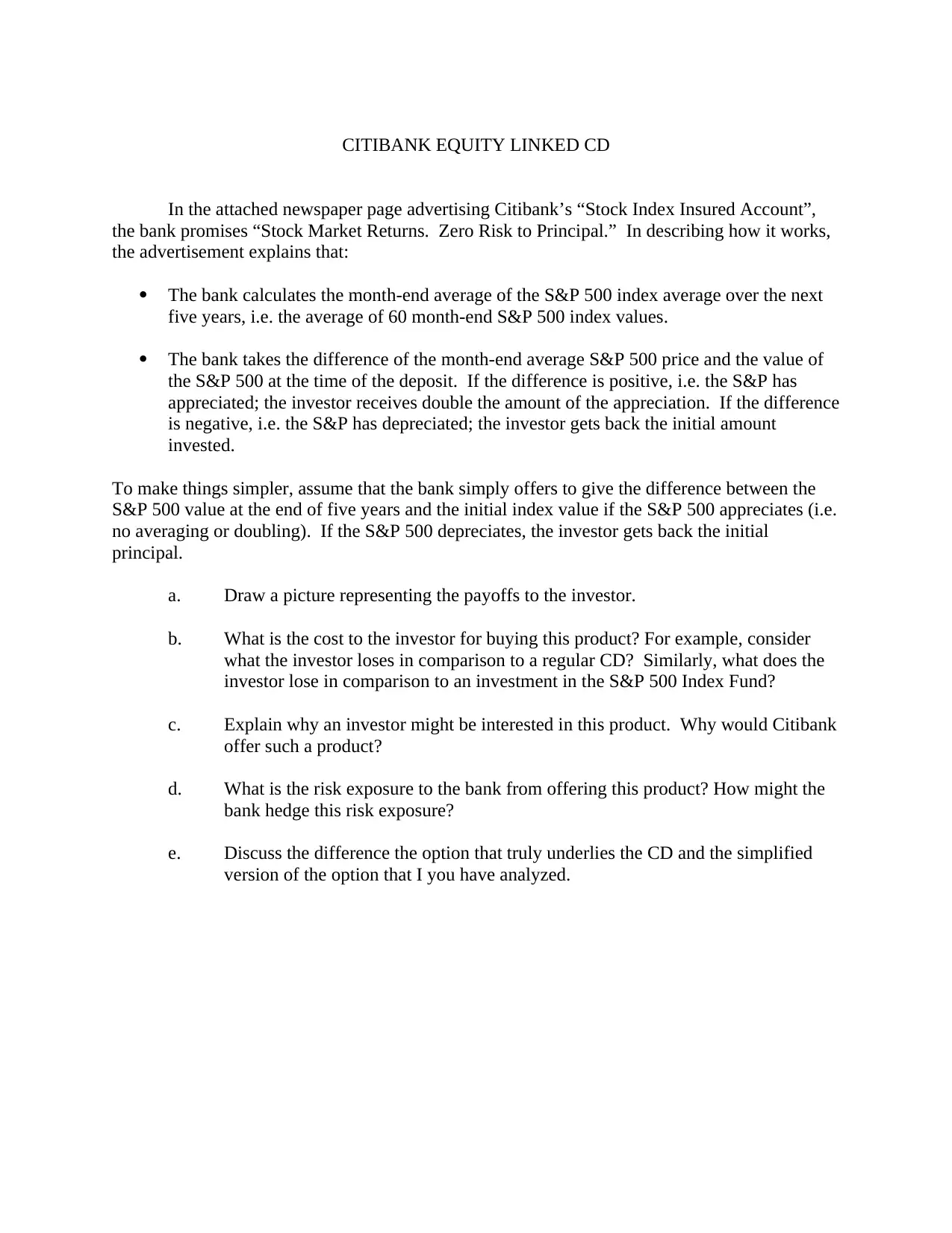Citibank Equity Linked CD: A Detailed Analysis and Evaluation
VerifiedAdded on 2019/10/18
|2
|353
|321
Homework Assignment
AI Summary
This assignment analyzes Citibank's Equity Linked Certificate of Deposit (CD). It examines the product's features, including how the return is calculated based on the S&P 500 index performance. The assignment requires creating a visual representation of the investor's payoffs, calculating the cost to the investor compared to a regular CD and an S&P 500 index fund, and explaining the motivations of both the investor and Citibank for engaging in this product. Furthermore, the assignment explores the risk exposure of the bank and potential hedging strategies, concluding with a comparison between the simplified and actual options underlying the CD.
1 out of 2




![[object Object]](/_next/static/media/star-bottom.7253800d.svg)